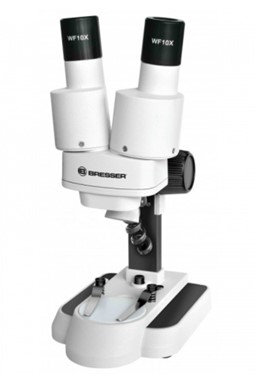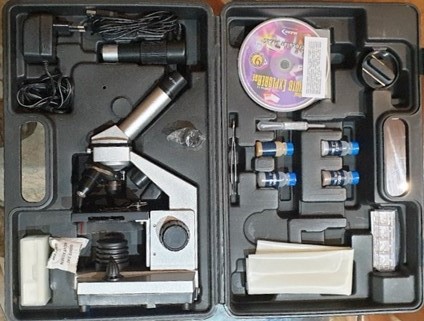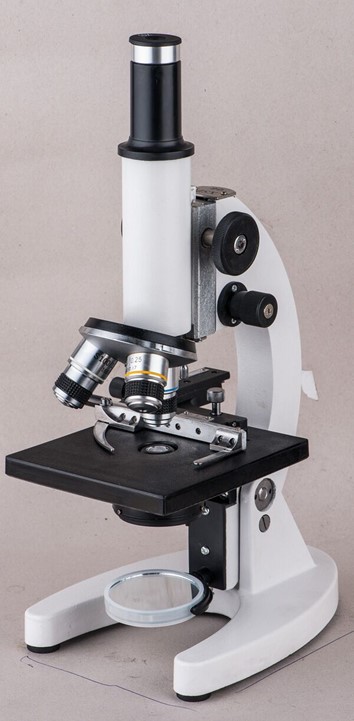For those interested in microscopy the SBKA have a range of optical microscopes you can borrow at no cost – see below :-
There are 2 Bresser Biolux ICD 20x stereo dissection microscopes:

Being a low magnification stereo microscope with a large depth of field this device is ideal for getting a close-up view of your bees, dissection, Varroa, Braula etc. and some of the interesting detritus on your inspection board. You can also make some initial forays into the world of pollen although higher magnifications will be required to do this seriously.
The combination of 2 10x of high-grade wide field eyepieces, and the 2x oculars give 20x magnification. The height adjustable binocular head allows for observations of larger items. The microscope has a battery powered top illumination. The illuminator is powered by two AA batteries (not included). The individual eye relief of the observer is adjustable.
There are 2 Visiomar microscopes with complete kits of preparation equipment.

There are 2 eyepieces with 10x and 16x giving a maximum optical magnification of 640x… so the claimed 1024x must rely on further digital magnification via the camera / display monitor. They should both have CCD cameras, but one has been lost. The illumination is via a variable intensity LED and various filters on a colour wheel.Suitable for studying pollen etc and possibly diagnosing Nosema which requires 400x.
There is one XSP-06 Biological Microscope / Acutech MD1600

Monocular head
Huygens eyepieces: H5X, H10X, H16X
3 turret objective head with achromatic objectives: 10X, 40X, 100X (oil immersion)
Giving magnifications from 50x – 1600x
Coarse focus adjustment range: 50mm
Fine adjustment range: 1.8-2.2mm
X-Y Stage 120mm*120mm essential at high magnifications
Illumination by concave-plan reflector φ50mm with N.A=1.25 Abbe condenser, iris diaphragm & filter
The best quality of those we have available and suitable for diagnosing Nosema for example.
XSP-06 Biological Microscope – Medigold Electromed

We also have 2 Celestron clamps to allow mobile phones to be fitted for photography.
These not only provide excellent images but also make using the microscope less tiring for the eyes.
One micrometre adjustment of X-Y and the other X-Y &Z


